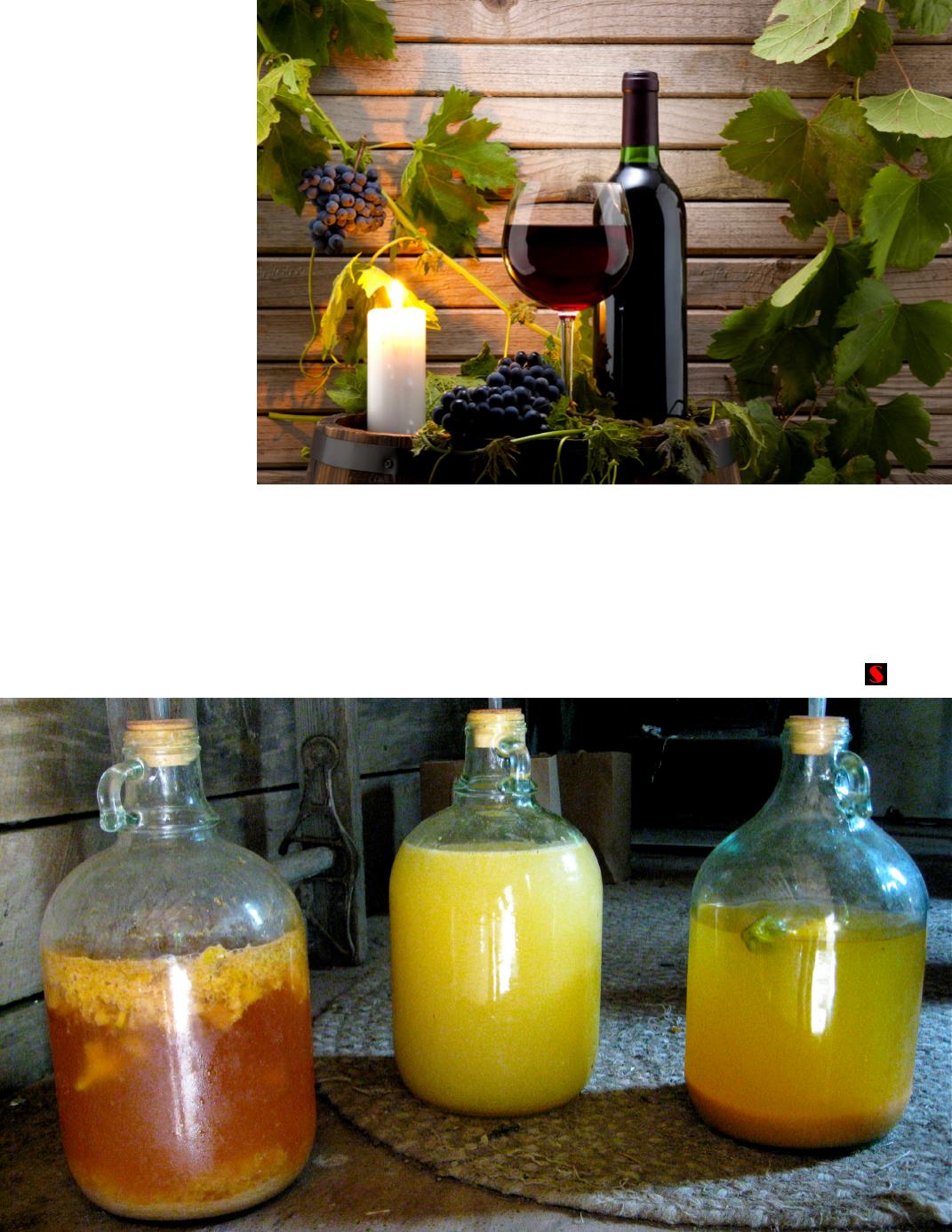

opening.
Step Five - Transfer
into the secondary
fermentation con-
tainer
Once the initial fermenta-
tion process has ceased,
the wine will need to be
placed into a glass jug that
is sometimes referred to
as a “carboy.” To do this,
you will first need to strain
the pulp from the liquid and
then pour the liquid through
a funnel into the container.
Once the wine has been
poured, the container
needs to be fitted with a
fermentation trap, called an
“airlock.” The wine will need
to ferment in this container
for several weeks.
Step Six - Rack Wine
The procedure of racking the wine is
essential to winemaking. Racking is
the process of siphoning the wine off
the sediments into a clean secondary
fermentation container. This can be
done with a flexible plastic tube. Rack-
ing is usually done on a regular basis
over several months until the wine is
clear and ready to be placed in bottles.
Step Seven - Bottling
Finally, when the wine is sufficiently
clear and the fermentation process
has ended, it will be time to bottle your
vintage. The easiest way to transfer
the wine from a secondary fermenta-
tion container into bottles is to siphon
it using the tubing that you used for
racking. It is important not to overfill
the bottles and to secure corks tightly.
Newly bottled wine should be stored
upright for the first three days. After
that, it should be stored on its side at
55 degrees Fahrenheit. White wine
should be aged for at least 6 months
before sampling, and red wine should
be aged for a minimum of 1 year.














